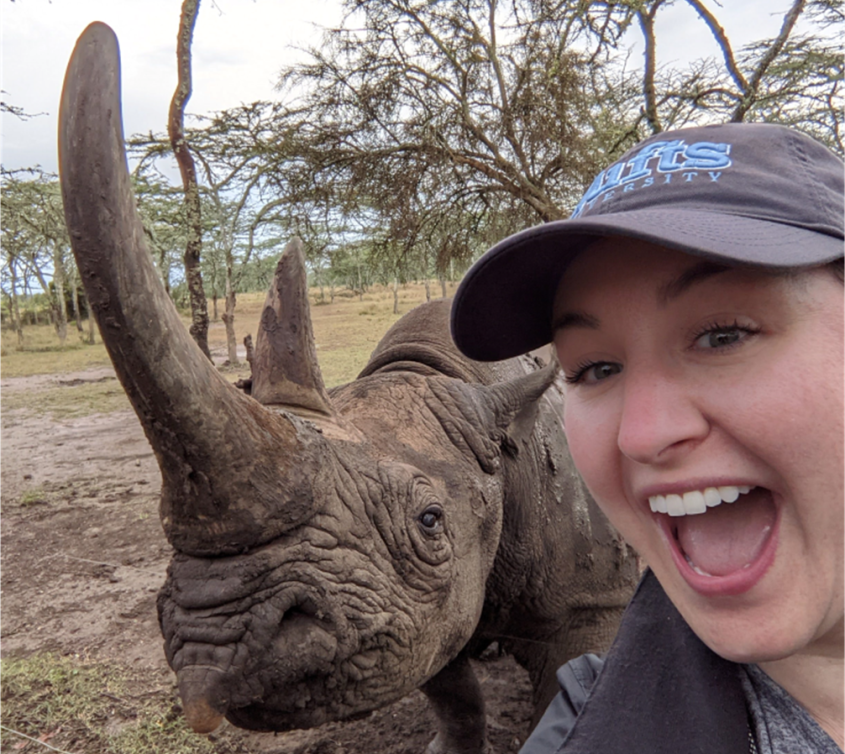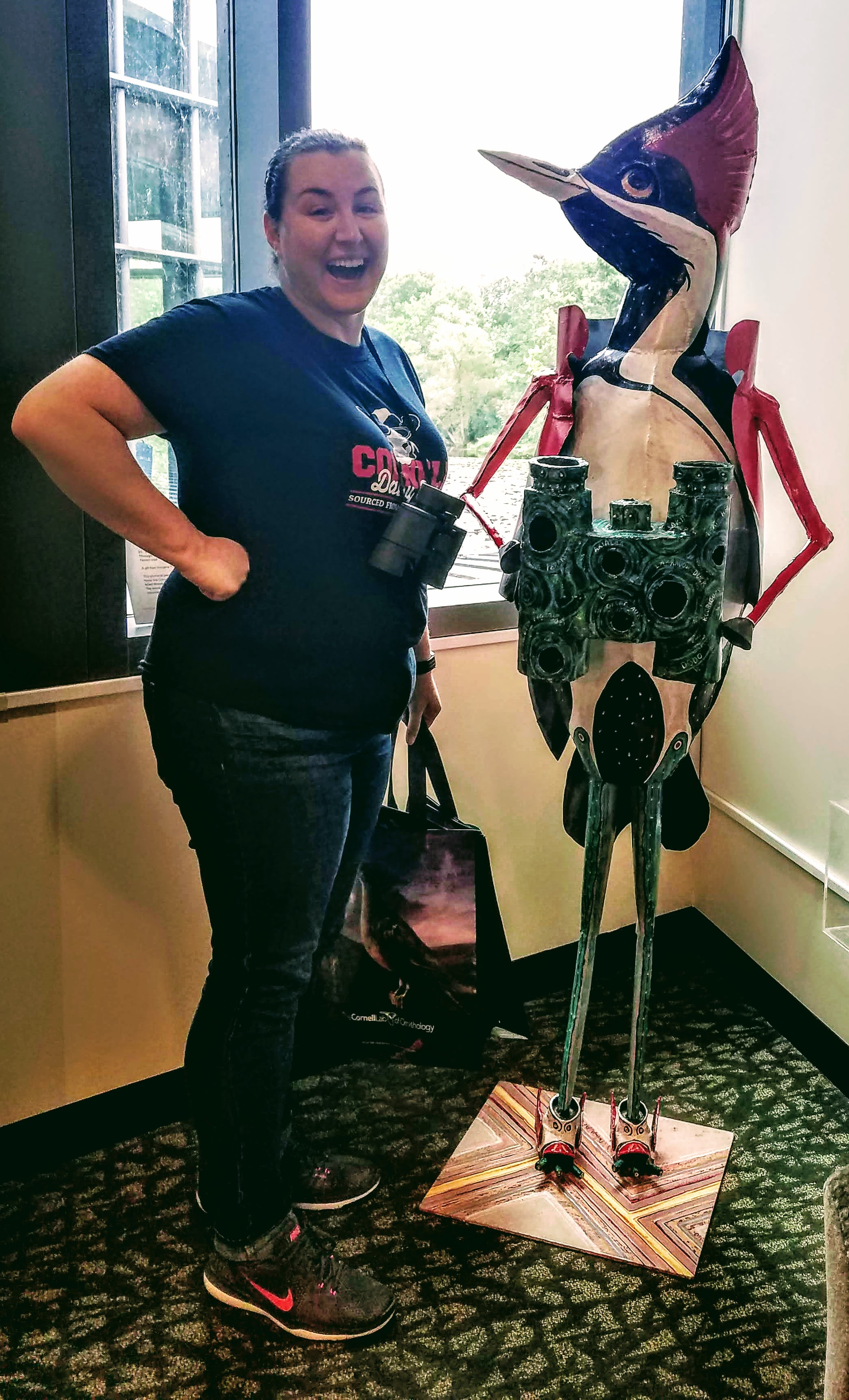Student Spotlight: Danielle Sosnicki, PhD Candidate in Biomedical & Biological Sciences with a Zoology and Wildlife Concentration
Danielle Sosnicki was first inspired to pursue graduate training in reproductive physiology after reading about the northern white rhinoceros, a functionally extinct subspecies of the white rhinoceros. “Their story is what got me interested in trying to help critically endangered species. That’s my goal,” she says.
Now a fifth-year PhD candidate at Cornell University in the Biomedical & Biological Sciences PhD Program with a Zoology and Wildlife Concentration within the Cornell-Smithsonian Joint Graduate Training Program, Sosnicki’s research in the Travis Lab has focused on the mechanisms that are involved in production of functional sperm, particularly the role that lipids play in sperm maturation. By improving our understanding of how sperm come to be able to successfully fertilize an egg, she hopes to be able to help increase the populations of critically endangered species and promote healthy genetic diversity.
While Sosnicki was initially somewhat hesitant about focusing her research on “basic science,” she is now quick to acknowledge the importance of her work. “Basic science is incredibly important for conservation because you have to know how things work in order to intervene. I don’t know if I saw that early on in my PhD, but now I think I appreciate that much more. We do take things for granted. We know a lot about reproduction in cattle because there is a whole industry for cattle reproduction. But we’ve never even attempted some ‘simple things’ like artificial insemination and in vitro fertilization for more endangered species. That’s crazy to me!”
“...there are so many facets of wildlife conservation. I believe that you just have to find the things that you’re passionate about and then match them with your skill set. There are so many ways to be involved, and we need all the help we can get."
Sosnicki’s academic experience, impacted by the pandemic, has involved four consecutive academic years here at Cornell, the first of which she spent rotating through different labs before officially joining the Travis Lab. She is now nearing completion of her training with a final year spent at the Smithsonian’s National Zoo and Conservation Biology Institute after previously spending several summers there. The opportunity to collaborate with researchers at two different institutions has been one of the highlights of her graduate school experience, allowing her to apply her work in different contexts.
Sosnicki’s work with the Smithsonian still focuses on the epididymis, the duct where sperm maturation is thought to occur, but now uses domestic feline models as opposed to the mouse models she employed at Cornell.
“Right now we’re focusing on epididymosomes, which are tiny extracellular vesicles that are mostly studied to see how they help sperm mature. We’re interested in looking to see if there is communication between those extracellular vesicles and other areas of the epididymis. I’m trying to get some culture systems up and running so we can culture epididymal tissue. This way, we can understand if there are changes when we expose tissue to different populations of extracellular vesicles.”
This research has a myriad of applications, including the improvement of reproductive success in endangered species and development of contraceptives for zoo and wildlife species. “While improving reproductive success in endangered species has always been my main reason for wanting to work in conservation and is what prompted me to apply to graduate school, there is also the possibility that my work could help with the development of new contraceptives for wildlife, too. There is a great need for non-hormonal male contraceptives that would not affect secondary sex characteristics (such as a male lion’s mane) to help manage zoological populations without potentially changing normal behavior or social structure. By gaining a better understanding of the processes that allow sperm to fertilize an egg, we can discover new targets for contraceptives that interrupt these processes and stop fertilization from occurring.”
At the Smithsonian, Sosnicki has also enjoyed being present when animals are anesthetized and assisting with semen recovery and biobanking. The highlight of her PhD experience, she says, has been the ever-present opportunity to learn new things. “Working on my PhD has given me the perfect opportunity to learn about many things, whether or not they’re directly related to my research. I’ve absolutely loved that!”
While Sosnicki has found her own niche within the conservation world, she is quick to emphasize that there is a place in the field for all those interested in making a difference. “I think that the parts of wildlife conservation that most people know about are the stereotypically glamorous ones, and that can make the field seem really small. I worry that that discourages people from wanting to be involved, but there are so many facets of wildlife conservation. I believe that you just have to find the things that you’re passionate about and then match them with your skill set. There are so many ways to be involved, and we need all the help we can get. If you’re passionate about this work, the field can use you!”
Written by Colleen Sorge ’20, DVM ’24
Photos provided by Danielle Sosnicki.


